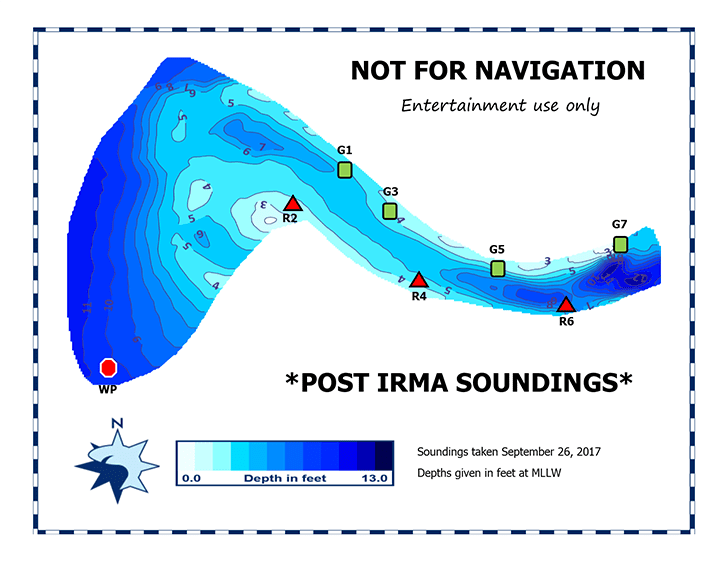By Alan Ritchie:
It appears from the ECA analysis of the depth soundings in the navigation channel of Wiggins Pass after hurricane Irma passed over the area appear to be good and that the channel held up pretty well.
As you can see from the ReefMaster chart shown below, the depths that existed on September 26, 2017 (adjusted to reflect the depths at mean low water) indicate that the marked channel was in pretty good shape.
The storm did some significant damage to several of the channel markers but, by the end of September, Collier County was able to restore all of the channel markers so that they reflect the best available water levels in the marked channel. The only signage that was still not replaced was the “No Wake/Idle Speed ” marker that needed to be repositioned after the storm. The County is working with the State to coordinate its new location and this new signage should be in place by mid-October.
As part of this post-storm repair activity, some of the channel markers needed to be repositioned short distances and the following channel markers were upgraded with new reflective tape: Green 1, 3, 5 & 7 along with Red 2, 4, 6, 8 &10. As we head into our busier winter season, the upgraded locations and improved visibility of the new channel markers should significantly enhance safety while navigating the Pass.
While these soundings in the channel provide useful historical information on the Pass, the channel is subject to continuous shoaling and therefore this information cannot be reliably used to forecast future conditions in the Pass.
The Estuary Conservation Association, Inc. provides this information on its website at: www.estuaryconservation.org and also posts this information on the wall, just inside the door of the fuel dock office at the Cocohatchee Marina.
Great care should be used by all mariners using Wiggins Pass to prevent accidents that damage equipment and risk environmental damage to the Cocohatchee Estuary.
Alan Ritchie is a volunteer member of the Estuary Conservation Association, Inc. and reports regularly on conditions in the Wiggins Pass channel and the Cocohatchee estuary.

